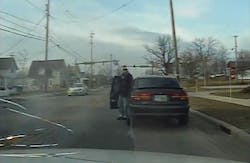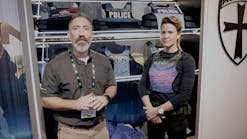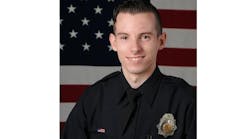I hope that when you read the title of this article you shook your head. There is no such thing as a routine traffic stop. However, traffic stops routinely occur during the course of a police officer’s shift. They can’t be avoided, nor can there ever be a template to follow that is completely safe or fool-proof. Every stop is unique.
Pulling over a vehicle is inherently dangerous. The FBI report, Law Enforcement Officers Killed & Assaulted 2011 ,indicated that 11 officers lost their lives during traffic stops; 15 officers died in ambush situations, some involving vehicles. There are many considerations when deciding to make the stop: the optimal location, traffic conditions, lighting, weather, etc. Additionally, we assume that in big cities like Chicago, New York, Detroit, etc, the propensity for danger is higher than it is in small towns, since big cities have a higher concentration of criminals. High-risk stops, those in which we know we have a felon(s) involved, are more high stress than a traffic stop made when someone runs a stop sign . . . right?
Let’s talk about it and use a recent case to illustrate the danger. A deadly gun battle occurred on March 10, 2013, in suburban Cleveland, Ohio. Two Middlefield Police Department patrol officers observed a driver run a stop sign. Middlefield is a small town - it’s quiet and is some respects, a throwback to the old days. The town’s history dates back to the 16th century. The Amish share the streets in this quaint town sharing the road in their horse-drawn buggies.
Middlefield PD is a small department consisting of 12 officers, including Chief Arnold Stanko. It’s not your typical big city department with a huge training budget and lots of violent crime for cops to cut their teeth on. Nevertheless, what happened that day is remarkable, and a testament to the courage of the two officers involved.
Officers Brandon Savage and Erin Thomas were on patrol together. Thomas had only been on the job for one month. The partners observed a vehicle blow a stop sign and proceeded to pull the car over. That’s when things went south. After the officers called it in, Officer Thomas exited the patrol car on the passenger side. Seconds later the traffic violator sprang from his vehicle armed with an AK 47 rifle and began firing.
Thomas immediately called out to her partner that the driver had a gun. Then the shooting commenced and both officers returned fire. Dash cam video shows the offender assaulting the officers and firing numerous bursts of fire at both of them totaling 37 rounds. Both cops were hit, as was the offender, as the heroic cops fired 54 rounds at the threat facing them.
Even though Thomas was wounded in the hand and leg, her training kicked in automatically and she communicated with her partner telling him to cover her while she called for assistance. At one point in the firefight, the subject could be heard yelling, “Kill me!” (This strongly suggests what’s become known as “Suicide by cop.”) The man’s wish was granted. A subsequent search of the deceased’s vehicle revealed eight fully loaded magazines of 40 rounds each, five pounds of gunpowder and empty casings. The subject also had a large number of books and DVDs relating to terrorism, explosives, weaponry and close-range gun fighting.
The offender had no criminal history and was not a member of any militia or subversive type organizations. Chief Stanko characterized the man as an unemployed loner who lived with his mother. The shooting was the first officer-involved incident in Middlefield.
So what is the takeaway from this shootout? In my opinion, there are a number of lessons to be learned:
- This incident reinforces the fact that there are no routine traffic stops. Officers need to be vigilant every moment, and prepared for the “What Ifs?” If I am assaulted during a traffic stop, what are my options?
- Consider cover - the best predictor of who wins a gunfight is most likely the one who has cover.
- Return fire quickly, even while going to cover.
- Consider using your patrol car as a weapon, driving into the assailant if he is outside of his vehicle.
- Consider putting your patrol car in reverse, thus putting distance between yourself and the shooter. This tactic may also give you time to regroup and gain a more tactical advantage, particularly if you are outgunned.
- Always scan the area for other sources of cover you might utilize if a gun battle erupts while you are out of your vehicle.
- Rarely is anything as it seems. An all-out assault on two cops occurred in small town America by a loner with no criminal history. Never take anyone for granted or underestimate their potential to harm you.
- Officers should be aware of the phenomenon known as “Suicide by cop,” and recognize that an incident such as this is potentially as lethal to the officers as it is to the perpetrator.
- Traffic stops must be an important part of regular yearly in-service training, to include tactics for both one and two man patrol cars. Training is priceless, and is the only thing we can refer to when involved in critical situations. Without training, we put ourselves further behind in the reactionary power curve than we normally are.
The above suggestions are just that, suggestions. Officers need to learn and follow their department’s SOP regarding traffic stops. However, traffic stops and the tactics involved are ever evolving. If you find your department’s traffic stop policy is outdated, please recommend that it be updated.
Officers Savage and Thomas acted heroically on March 10, 2013. A veteran cop and a rookie worked together to defeat an adversary hell bent on killing them and himself. I commend them both. Dash cam video from their shooting is available at this link: Ohio Officers’ Shootout.
Stay safe, Brothers and Sisters!
Links:

John Wills
John M. Wills is a former Chicago police officer and retired FBI agent. He is a freelance writer and award-winning author in a variety of genres, including novels, short stories and poetry. John also writes book reviews for the New York Journal of Books, and is a member of the National Book Critics Circle. His new book, The Year Without Christmas, is available now. Visit John at: www.johnmwills.com.



